HSBC 2008 Annual Report Download - page 172
Download and view the complete annual report
Please find page 172 of the 2008 HSBC annual report below. You can navigate through the pages in the report by either clicking on the pages listed below, or by using the keyword search tool below to find specific information within the annual report.-
 1
1 -
 2
2 -
 3
3 -
 4
4 -
 5
5 -
 6
6 -
 7
7 -
 8
8 -
 9
9 -
 10
10 -
 11
11 -
 12
12 -
 13
13 -
 14
14 -
 15
15 -
 16
16 -
 17
17 -
 18
18 -
 19
19 -
 20
20 -
 21
21 -
 22
22 -
 23
23 -
 24
24 -
 25
25 -
 26
26 -
 27
27 -
 28
28 -
 29
29 -
 30
30 -
 31
31 -
 32
32 -
 33
33 -
 34
34 -
 35
35 -
 36
36 -
 37
37 -
 38
38 -
 39
39 -
 40
40 -
 41
41 -
 42
42 -
 43
43 -
 44
44 -
 45
45 -
 46
46 -
 47
47 -
 48
48 -
 49
49 -
 50
50 -
 51
51 -
 52
52 -
 53
53 -
 54
54 -
 55
55 -
 56
56 -
 57
57 -
 58
58 -
 59
59 -
 60
60 -
 61
61 -
 62
62 -
 63
63 -
 64
64 -
 65
65 -
 66
66 -
 67
67 -
 68
68 -
 69
69 -
 70
70 -
 71
71 -
 72
72 -
 73
73 -
 74
74 -
 75
75 -
 76
76 -
 77
77 -
 78
78 -
 79
79 -
 80
80 -
 81
81 -
 82
82 -
 83
83 -
 84
84 -
 85
85 -
 86
86 -
 87
87 -
 88
88 -
 89
89 -
 90
90 -
 91
91 -
 92
92 -
 93
93 -
 94
94 -
 95
95 -
 96
96 -
 97
97 -
 98
98 -
 99
99 -
 100
100 -
 101
101 -
 102
102 -
 103
103 -
 104
104 -
 105
105 -
 106
106 -
 107
107 -
 108
108 -
 109
109 -
 110
110 -
 111
111 -
 112
112 -
 113
113 -
 114
114 -
 115
115 -
 116
116 -
 117
117 -
 118
118 -
 119
119 -
 120
120 -
 121
121 -
 122
122 -
 123
123 -
 124
124 -
 125
125 -
 126
126 -
 127
127 -
 128
128 -
 129
129 -
 130
130 -
 131
131 -
 132
132 -
 133
133 -
 134
134 -
 135
135 -
 136
136 -
 137
137 -
 138
138 -
 139
139 -
 140
140 -
 141
141 -
 142
142 -
 143
143 -
 144
144 -
 145
145 -
 146
146 -
 147
147 -
 148
148 -
 149
149 -
 150
150 -
 151
151 -
 152
152 -
 153
153 -
 154
154 -
 155
155 -
 156
156 -
 157
157 -
 158
158 -
 159
159 -
 160
160 -
 161
161 -
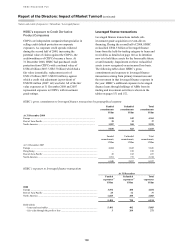 162
162 -
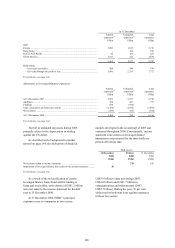 163
163 -
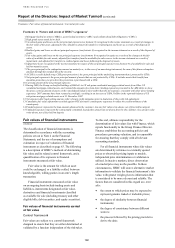 164
164 -
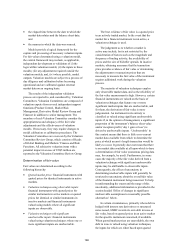 165
165 -
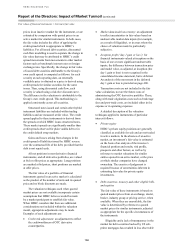 166
166 -
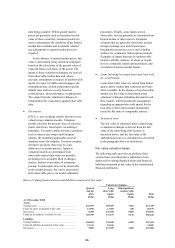 167
167 -
 168
168 -
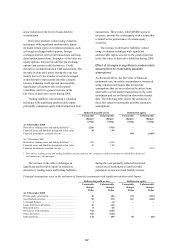 169
169 -
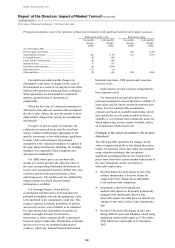 170
170 -
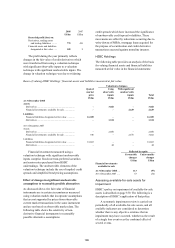 171
171 -
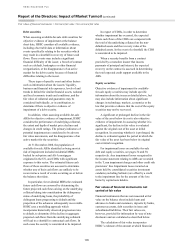 172
172 -
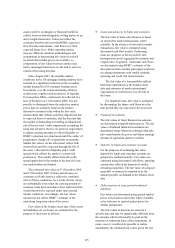 173
173 -
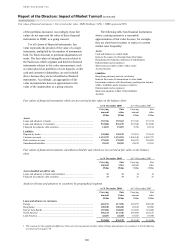 174
174 -
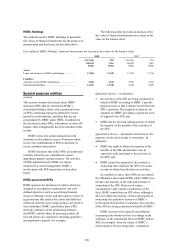 175
175 -
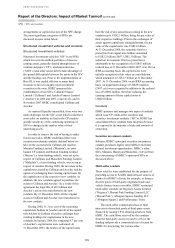 176
176 -
 177
177 -
 178
178 -
 179
179 -
 180
180 -
 181
181 -
 182
182 -
 183
183 -
 184
184 -
 185
185 -
 186
186 -
 187
187 -
 188
188 -
 189
189 -
 190
190 -
 191
191 -
 192
192 -
 193
193 -
 194
194 -
 195
195 -
 196
196 -
 197
197 -
 198
198 -
 199
199 -
 200
200 -
 201
201 -
 202
202 -
 203
203 -
 204
204 -
 205
205 -
 206
206 -
 207
207 -
 208
208 -
 209
209 -
 210
210 -
 211
211 -
 212
212 -
 213
213 -
 214
214 -
 215
215 -
 216
216 -
 217
217 -
 218
218 -
 219
219 -
 220
220 -
 221
221 -
 222
222 -
 223
223 -
 224
224 -
 225
225 -
 226
226 -
 227
227 -
 228
228 -
 229
229 -
 230
230 -
 231
231 -
 232
232 -
 233
233 -
 234
234 -
 235
235 -
 236
236 -
 237
237 -
 238
238 -
 239
239 -
 240
240 -
 241
241 -
 242
242 -
 243
243 -
 244
244 -
 245
245 -
 246
246 -
 247
247 -
 248
248 -
 249
249 -
 250
250 -
 251
251 -
 252
252 -
 253
253 -
 254
254 -
 255
255 -
 256
256 -
 257
257 -
 258
258 -
 259
259 -
 260
260 -
 261
261 -
 262
262 -
 263
263 -
 264
264 -
 265
265 -
 266
266 -
 267
267 -
 268
268 -
 269
269 -
 270
270 -
 271
271 -
 272
272 -
 273
273 -
 274
274 -
 275
275 -
 276
276 -
 277
277 -
 278
278 -
 279
279 -
 280
280 -
 281
281 -
 282
282 -
 283
283 -
 284
284 -
 285
285 -
 286
286 -
 287
287 -
 288
288 -
 289
289 -
 290
290 -
 291
291 -
 292
292 -
 293
293 -
 294
294 -
 295
295 -
 296
296 -
 297
297 -
 298
298 -
 299
299 -
 300
300 -
 301
301 -
 302
302 -
 303
303 -
 304
304 -
 305
305 -
 306
306 -
 307
307 -
 308
308 -
 309
309 -
 310
310 -
 311
311 -
 312
312 -
 313
313 -
 314
314 -
 315
315 -
 316
316 -
 317
317 -
 318
318 -
 319
319 -
 320
320 -
 321
321 -
 322
322 -
 323
323 -
 324
324 -
 325
325 -
 326
326 -
 327
327 -
 328
328 -
 329
329 -
 330
330 -
 331
331 -
 332
332 -
 333
333 -
 334
334 -
 335
335 -
 336
336 -
 337
337 -
 338
338 -
 339
339 -
 340
340 -
 341
341 -
 342
342 -
 343
343 -
 344
344 -
 345
345 -
 346
346 -
 347
347 -
 348
348 -
 349
349 -
 350
350 -
 351
351 -
 352
352 -
 353
353 -
 354
354 -
 355
355 -
 356
356 -
 357
357 -
 358
358 -
 359
359 -
 360
360 -
 361
361 -
 362
362 -
 363
363 -
 364
364 -
 365
365 -
 366
366 -
 367
367 -
 368
368 -
 369
369 -
 370
370 -
 371
371 -
 372
372 -
 373
373 -
 374
374 -
 375
375 -
 376
376 -
 377
377 -
 378
378 -
 379
379 -
 380
380 -
 381
381 -
 382
382 -
 383
383 -
 384
384 -
 385
385 -
 386
386 -
 387
387 -
 388
388 -
 389
389 -
 390
390 -
 391
391 -
 392
392 -
 393
393 -
 394
394 -
 395
395 -
 396
396 -
 397
397 -
 398
398 -
 399
399 -
 400
400 -
 401
401 -
 402
402 -
 403
403 -
 404
404 -
 405
405 -
 406
406 -
 407
407 -
 408
408 -
 409
409 -
 410
410 -
 411
411 -
 412
412 -
 413
413 -
 414
414 -
 415
415 -
 416
416 -
 417
417 -
 418
418 -
 419
419 -
 420
420 -
 421
421 -
 422
422 -
 423
423 -
 424
424 -
 425
425 -
 426
426 -
 427
427 -
 428
428 -
 429
429 -
 430
430 -
 431
431 -
 432
432 -
 433
433 -
 434
434 -
 435
435 -
 436
436 -
 437
437 -
 438
438 -
 439
439 -
 440
440 -
 441
441 -
 442
442 -
 443
443 -
 444
444 -
 445
445 -
 446
446 -
 447
447 -
 448
448 -
 449
449 -
 450
450 -
 451
451 -
 452
452 -
 453
453 -
 454
454 -
 455
455 -
 456
456 -
 457
457 -
 458
458 -
 459
459 -
 460
460 -
 461
461 -
 462
462 -
 463
463 -
 464
464 -
 465
465 -
 466
466 -
 467
467 -
 468
468 -
 469
469 -
 470
470 -
 471
471 -
 472
472
 |
 |

HSBC HOLDINGS PLC
Report of the Directors: Impact of Market Turmoil (continued)
Fair values of financial instruments > Carried at fair value / Not carried at fair value
170
Debt securities
When assessing available-for-sale debt securities for
objective evidence of impairment at the balance
sheet date, HSBC considers all available evidence,
including observable data or information about
events specifically relating to the securities which
may result in a shortfall in recovery of future cash
flows. These events may include a significant
financial difficulty of the issuer, a breach of contract
such as a default, bankruptcy or other financial
reorganisation, or the disappearance of an active
market for the debt security because of financial
difficulties relating to the issuer.
These types of specific event and other factors
such as information about the issuers’ liquidity,
business and financial risk exposures, levels of and
trends in default for similar financial assets, national
and local economic trends and conditions, and the
fair value of collateral and guarantees may be
considered individually, or in combination, to
determine if there is objective evidence of
impairment of a debt security.
In addition, when assessing available-for-sale
ABSs for objective evidence of impairment, HSBC
considers the performance of underlying collateral,
the extent and depth of market price declines and
changes in credit ratings. The primary indicators of
potential impairment are considered to be adverse
fair value movements, and the disappearance of an
active market for the securities.
At 31 December 2008, the population of
available-for-sale ABSs identified as being most at
risk of impairment included residential MBSs
backed by sub-prime and Alt-A mortgages
originated in the US, and CDOs with significant
exposure to this sector. The estimated future cash
flows of these securities are assessed to determine
whether any of their cash flows are unlikely to be
recovered as a result of events occurring on or before
the balance sheet date.
In particular, for residential MBSs the estimated
future cash flows are assessed by determining the
future projected cash flows arising on the underlying
collateral taking into consideration the delinquency
status of underlying loans, the probability of
delinquent loans progressing to default and the
proportion of the advances subsequently recoverable.
HSBC uses a modelling approach which
incorporates historically observed progression rates
to default, to determine if the decline in aggregate
projected cash flows from the underlying collateral
will lead to a shortfall in contractual cash flows. In
such cases the security is considered to be impaired.
In respect of CDOs, in order to determine
whether impairment has occurred, the expected
future cash flows of the CDOs are compared with
the total of the underlying collateral on the non-
defaulted assets and the recovery value of the
defaulted assets. In the event of a shortfall, the CDO
is considered to be impaired.
When a security benefits from a contract
provided by a monoline insurer that insures
payments of principal and interest, the expected
recovery on the contract is assessed in determining
the total expected credit support available to the
ABS.
Equity securities
Objective evidence of impairment for available-
for-sale equity securities may include specific
information about the issuer as detailed above, but
may also include information about significant
changes in technology, markets, economics or the
law that provides evidence that the cost of the equity
securities may not be recovered.
A significant or prolonged decline in the fair
value of the asset below its cost is also objective
evidence of impairment. In assessing whether it is
significant, the decline in fair value is evaluated
against the original cost of the asset at initial
recognition. In assessing whether it is prolonged, the
decline is evaluated against the period in which the
fair value of the asset has been below its original
cost at initial recognition.
For impairment losses on available-for-sale
debt and equity securities, see pages 34 and 30,
respectively. Any impairment losses recognised in
the income statement relating to ABSs are recorded
in the ‘Loan impairment charges and other credit risk
provisions’ line. Impairment losses incurred on
assets held by consolidated securities investment
conduits (excluding Solitaire) are offset by a credit
to the impairment line for the amount of the loss
borne by capital note holders.
Fair values of financial instruments not
carried at fair value
Financial instruments that are not measured at fair
value on the balance sheet include loans and
advances to banks and customers, deposits by banks,
customer accounts, debt securities in issue and
subordinated liabilities. Their fair values are,
however, provided for information by way of note
disclosure and are calculated as described below.
The calculation of fair value incorporates
HSBC’s estimate of the amount at which financial
